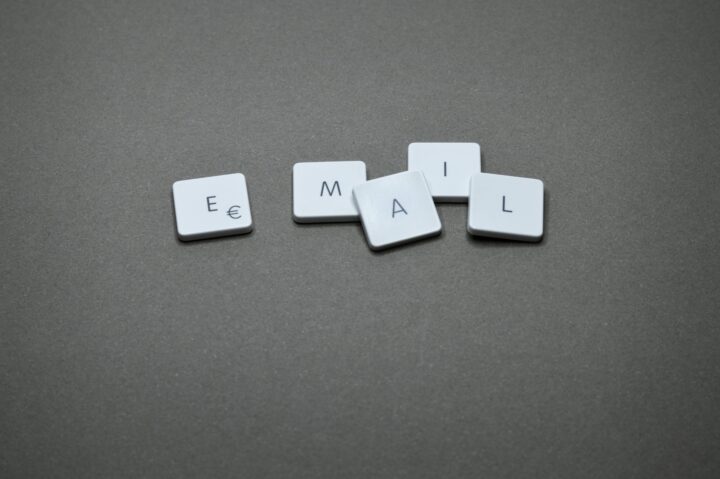
Email marketing is a cost-effective, highly targeted, and easily measurable way to connect with your customers and prospects—when done right. More often than not, we see B2B emails that are missing the opportunity to connect with their audience by glazing over the key details. Make sure these email marketing essentials are checked before you hit “send,” and you’ll be on your way to email marketing success.
Here’s how it works
Use this checklist every time you are about to send a marketing email. Check each item off when completed. When they are all checked, just refresh the page and the checklist will be ready for you to use again.
1. Subject Line + Preheader
You’ve got to catch the reader’s attention, and fast. The subject line is your first chance to tell them what your email is about. The “preheader” also appears in the inbox window. It’s the sentence right below your subject line that can help entice your reader to open your email, right now. [Example: (subject line) Your Employee Break Room (preheader) It’s for more than just coffee—learn how to turn it into a perk, too.]
2. One Clear Call to Action
For the purpose of an email campaign, the Call to Action, or CTA, is an instruction to the reader to click on a link now. Like your subject line, your CTA should be ultra-specific. We’ve found that the more detailed, the more readers tend to click. We ran a test recently of an ultra-specific CTA versus a general CTA, and the specific CTA won by a landslide. [Example: Find out how vs. Get your 4 steps, now]
3. Success Measurement
This essential component should be a part of the project brief you write before creating any campaign. Before launching your email is a good time for a pulse check: Is the goal of your campaign education, sign ups, referrals, or registration? How will the success of your campaign be measured? Do you have the proper tracking in place? What’s your benchmark?
4. Your List is Your Bond
The success of any campaign depends on your list. If someone has said they don’t want to hear from you, sending it to them anyway could negatively affect your results. Or, worse, they could mark your email as spam. Remember: Too many spam alerts will make it difficult for you to get into the inboxes of those who actually want to hear from you. Make sure that your suppression or exclusion lists have been properly applied. [Pro tip: Keep your lists up to date by removing anyone who has not opened an email from you in the last six months.]
5. Don’t Forget Good Design
Has this happened to you? In the rush to get your campaign out the door, your images, visual elements, or even your overall layout gets overlooked. But images do matter. And so does alt text. Well-written alt text will entice readers to show images if they are turned off. And that counts as an open!
6. Make it Personal
The more relevant your email is to your reader, the more likely your email gets opened—and the more likely they’ll feel good about doing business with you. In the rush to get your campaign out the door, segmenting and targeting could feel like too big of a task. It’s not too late. Read through your campaign: Is there a place for a more personalized message? How about changing any instances of “your company” to a personalization token or tag. For example, replace the sentence: “The next time your company thinks about email marketing…” with: “The next time Digital Meaning thinks about email marketing…” Sounds better already!
7. Mind the Permission (Laws)
Like anything else, honesty is the best policy. Be up front with your recipients about the email you are sending. This includes: disclosing who is sending the email, and what it’s about; reminding readers how they ended up on your list, and making it easy to opt-out if they wish. Most laws also stipulate that you must include a valid postal address for your business. Learn more from Campaign Monitor »
8. Optimize for All Email Clients
Between the introductions of Gmail’s grid view, a new anti-spam law, a bigger than ever iPhone, and so much more,the email marketing world is ever-changing, and your email template needs to change along with it. These changes affect how your campaigns will display, and also pave the path for using more advanced techniques—like animations, feeds, or a video background—to delight and connect with subscribers. [Pro tip: Don’t forget to check that all of your images show up and that your links are going to the right place.]
9. Always Be Testing
The best way to be sure you have the best subject line, preheaders, CTAs, timing and lists? Run an A/B or multi-variate test every time you send a campaign. Each email you send is another opportunity to learn something new about your audience. Are you ready to send and don’t have a test in place? Try one of these »
10. Text Version
Optimize your plain text version for each campaign so that it is easy to scan and read. Even when you’re sending out an HTML email, a plain text alternative is crucial. HTML-only emails are a red flag for spam filters as they like to see a plain text alternative. A lazy spammer wouldn’t take the time to create a plain text alternative so make sure you do! While it’s not as common as it used to be, some email clients still do not support or display HTML properly. In instances like this, the plain text email will render instead. Lastly, some people simply prefer it. If that’s the case, and you’re only sending HTML, you will have lost the opportunity to reach these subscribers. [Hint: Only create the text version after all changes to your HTML email have been made.]
Did you win?
If you checked all ten, way to go-you’re an email marketing pro! If you checked six or fewer, talk to us. We’ll help you every email marketing essential. All in all: It is an honor to have anyone agree to let you into their inbox. Make it worth their while and provide them with an exceptional experience.




